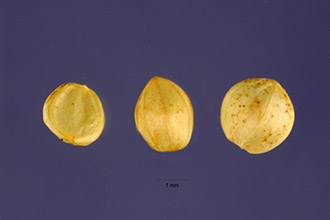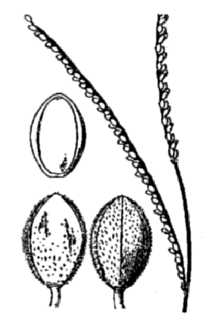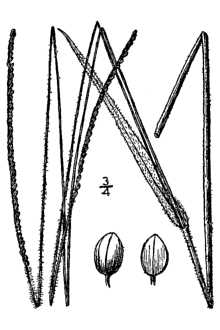Paspalum pubescens Muhl. ex Willd.
Scientific Name: Paspalum pubescens Muhl. ex Willd.

| General Information | |
|---|---|
| Usda Symbol | PAPU8 |
| Group | Monocot |
| Life Cycle | Perennial |
| Growth Habits | Graminoid |
| Native Locations | PAPU8 |
Plant Guide
Use soil moisture sensors to measure the soil moisture of Paspalum pubescens Muhl. ex Willd..
Fact Sheet
Uses
Forage: In Texas, thin paspalum (Paspalum setaceum) provides fair quality livestock forage, It also has low forage value for deer, Wildlife: Birds will eat the seed; however, low seed production limits this use, Restoration: Thin paspalum can be used in native site restoration, However, limited seed production will make it impractical for use in larger projects, , Use soil moisture sensors to measure the soil moisture of Paspalum pubescens Muhl. ex Willd..
Status
Please consult the PLANTS Web site and your State Department of Natural Resources for this plant’s current status (e.g. threatened or endangered species, state noxious status, and wetland indicator values).
Description
Thin paspalum is a short-lived, warm-season, tufted, perennial grass that grows 2 ½ to 3 feet tall. The base of the plant is knotty and has short rhizomes. It is a member of the Paniceae tribe of Poaceae, the grass family (Hitchcock, 1971). There are four varieties of Paspalum setaceum: setaceum, stramineum, muhlenbergii, and ciliatifolium. Not all plant authorities recognize these varieties. Paspalum setaceum var. setaceum (previously P. debile) is identified by some plant authorities as thin paspalum. Others recognize the varieties, but consider thin paspalum to be Paspalum setaceum, a separate entity from the other varieties. Still others see thin paspalum as the whole Paspalum setaceum complex, and do not recognize the individual varieties at all. The varieties will be discussed herein because the most recent authority recognizes them. The variety setaceum (previously P. debile, which Gould (1975) calls thin paspalum) can be differentiated from the other varieties as having narrower leaf blades, shorter spikelets, and gray-green herbage. The variety stramineum (previously P. stramineum) is distinguished from the other varieties by narrower leaf blades and yellow-green foliage. The variety muhlenbergii (previously P. muhlenbergii and P. pubescens) has light to dark green, pilose leaf blades and is distinguished by a conspicuous midvein on the lower floret. Finally, the variety ciliatifolium (previously P. ciliatifolium and P. propinquum) is recognized by its glabrous dark green to purplish herbage. It is commonly called fringeleaf paspalum. It is important to note that populations of widely variable, but intergrading plant types are included in the Paspalum setaceum complex.
Adaptation and Distribution
Distribution
Distribution
Thin paspalum is found along the Atlantic Coast from Massachusetts to Florida, along the Gulf Coast to Texas and south into Mexico, and also found inland in Ohio, West Virginia, Kentucky, and Tennessee. In Texas, it can be found throughout most of the state, but it is rare in the Edwards Plateau Plant Materials <http://plant-materials.nrcs.usda.gov/> Plant Fact Sheet/Guide Coordination Page <http://plant-materials.nrcs.usda.gov/intranet/pfs.html> National Plant Data Center <http://npdc.usda.gov>
Establishment
Thin paspalum can be best reproduced from seed. However, germination testing at the Plant Materials Center yielded only an average germination of five percent. There are approximately 705,304 seeds per pound of thin paspaulm.
Management
Thin paspalum does not require much management. A seed increase plot of thin paspalum growing at the Plant Materials Center has shown itself to be relatively drought hardy.



















